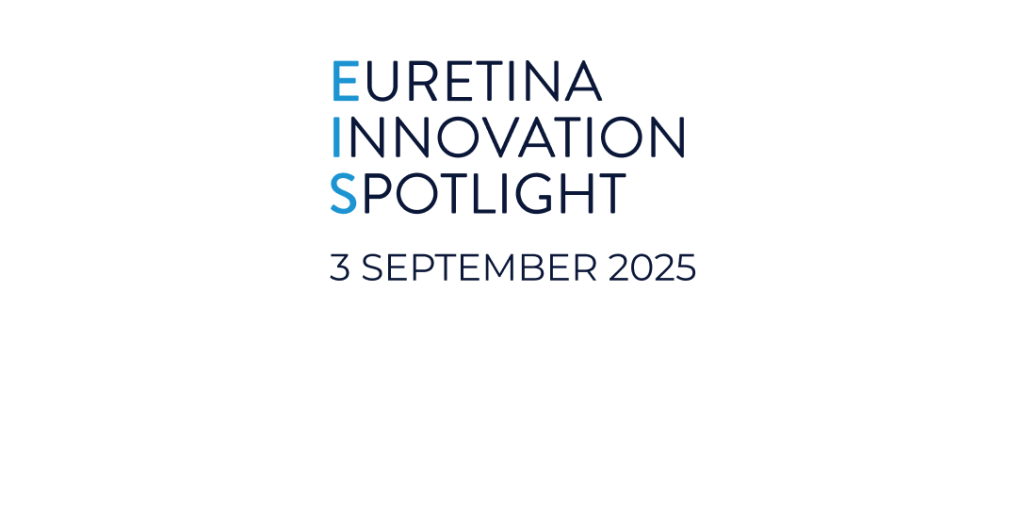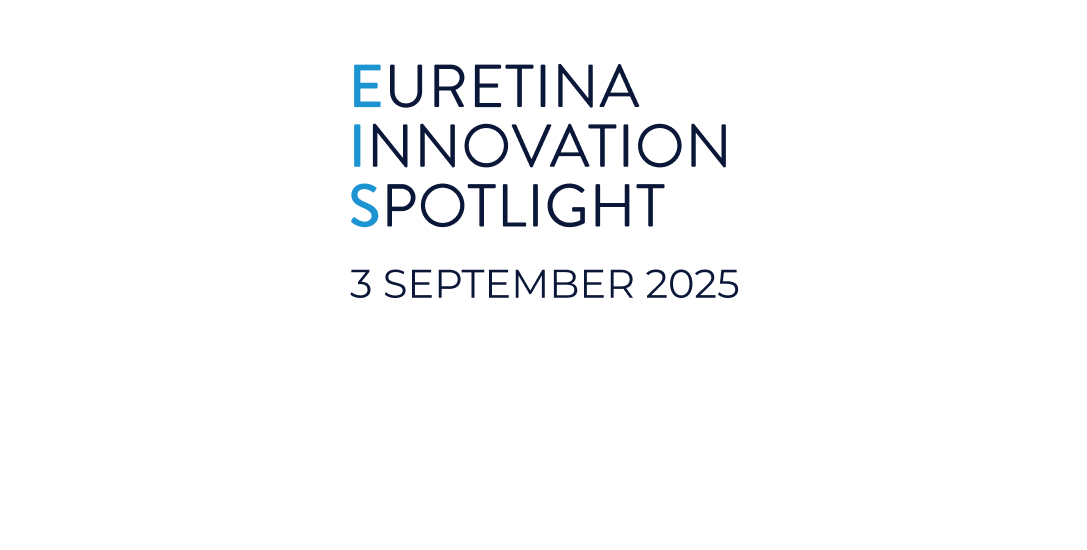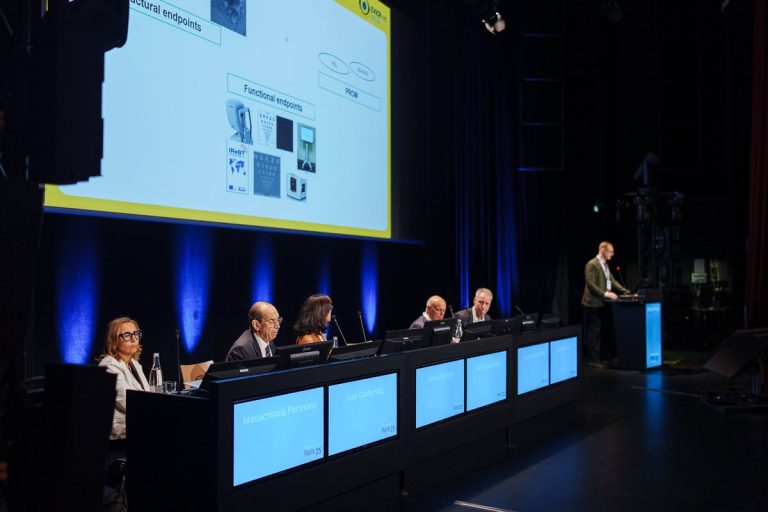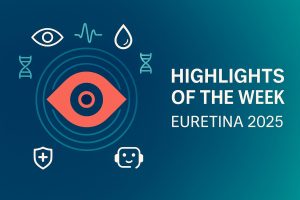Attendees at a EURETINA 2025 early morning session heard an update on ongoing studies being managed with support from the European Vision Clinical Research network (EVICR.net). Dr. José Cunha-Vaz, EVICR.net founder and president, said that years ago, upon returning to Europe after spending time in the United States, he was struck by the lack of organisational support that is required to plan and execute high quality clinical research.
“The EVICR.net was established to make it possible for someone who has an idea for a clinical research study to get the necessary support,” he said.
Dr. Hendrik Scholl (Switzerland), session chair, added “There are some extra challenges in Europe versus the United States. Everyone knows that the DRCR.net programme in the US has resulted important advancements in our field. EVICR.net is aiming for the same and taking on the challenges of conducting research in different countries where there are different legislations and languages. I would like to encourage everyone to use our network to perform investigator-initiated studies.”
Speakers at the session included Dr. Sobha Sivaprasad (UK) who discussed INTERCEPT-AMD, an imaging study assessing the natural history of intermediate AMD (iAMD) in which findings from multimodal imaging and the CAM Classification of Atrophy are being used for patient classification. One of the take home messages came from an analysis of baseline characteristics showing that eyes in all four classification subgroups had a mean visual acuity of 80 letters.
“So always remember that iAKD patients have good vision. If a patient does not, then investigate why. It may not be because of iAMD,” Dr Sivaprasad said.
Dr. Francesco Bandello (Italy) focused on the MONDEGO study and reviewed the background, objectives, and protocol design. MONDEGO is a phase IV multicentre, open-label, single-arm study to investigate the efficacy, safety and durability of faricimab in Caucasian patients with polypoidal choroidal vasculopathy (PCV).
“MONDEGO was conceived by Dr. Rufino Silva who is an important expert in this field. At the moment, we do not have a lot of information about PCV in Caucasian individuals in Europe, and so there is a very good rationale for doing this study,” Dr. Bandello said.
Dr. Robert Finger (Germany) gave an update on MACUSTAR, a multicenter, prospective study designed to develop endpoints for future clinical trials in iAMD. He presented the rationale for the study – it recognises that no endpoints are accepted by regulators for evaluation of treatments for iAMD – and described its design. The study has recruited >700 subjects and is developing and validating structural, functional, and patient-reported endpoints to enable future iAMD trials. Dr. Finger said that the study had an advantage in that its design involved interaction with three regulatory agencies (FDA, EMA, and NICE). More than 40 publications have been generated by the study group to date.
Dr. Inês Pereira Marques (Portugal) spoke about RECOGNISED. The aim of this study is to investigate the common mechanisms involved in the pathogenesis of diabetic retinopathy (DR) and cognitive impairment in type 2 diabetes (T2D) and to use the retina as a tool for identifying individuals with T2D at a higher risk of developing cognitive decline or dementia.
Dr. Pereira Marques presented findings from an analysis of cross-sectional data that provide insights on strategies for identifying potential cognitive impairment in people with T2D. Analysis of the prospective data will see if the findings are confirmed and if it is possible to propose a simple algorithm aimed for the early identification of cognitive impairment in patients with T2D,” she said.
Dr. Cunha-Vaz reviewed PROTOCOL AR, which is a collaboration between DRCR net and EVICR.net. It is a natural history study of retinal function designed to identify early functional changes associated with progression of diabetic retinopathy. He also described STOP-DR, which is an imaging data bank study of patients with diabetes being done to identify the transition between the hypoperfusion stage of diabetic retinopathy to the hypoperfusion stage of the disease. The study will be collecting well-defined sets of images (OCTA, fundus photography and fluorescein angiography) over a period of 2 years
Dr, Mariacristina Parravano (Italy) discussed CHART, a multicenter study including 202 eyes with mild to severe nonproliferative diabetic retinopathy (NPDR) that will establish the basis for future interventional studies. Using non-invasive retinal imaging to determine progression of retinal microvascular disease over a 12-month period, the results showed that retinal hypoperfusion progresses significantly over that period in eyes with mild to moderate NPDR and is well identified by measuring rates of progression in skeletonszed vessel density (SVD) and perfusion density by means of OCTA. It also found that in eyes with the most severe stages (ETDRS levels 47 and 53), capillary nonperfusion stabilszes and there is a hyperperfusion response that is identified by increases in microaneurysms turnover resulting from the development of intraretinal microvascular abnormalities.
Giving an update on retinal dystrophies research, Dr. Scholl mentioned the identification of lysosomal macular dystrophy as a new entity that needs to be considered in the differential diagnosis of macular disease. Caused by loss of functional mutations in various genes, chorioretinal atrophy is present in eyes at the most severe end of the phenotypic spectrum and has similarities to geography atrophy related to age-related macular degeneration.
He also highlighted the continued increase in identification of genes known to cause inherited retinal diseases, mentioned the recently reported disappointing results of the botaretigene sparoparvovec (bota-vec) gene therapy trial for x-linked retinitis pigmentosa caused by mutations in RPGR, and reported good news from an interim analysis of data from the phase 3 study of oral tinlarebant in childhood onset Stargardt disease (DRAGON)
Concluding the program, Cecilia Martinho (Portugal) mentioned the availability of Eye Platform, which is a European-wide high quality ophthalmic imaging database for large data analysis and clinical research. This secure platform is open for investigator use and allows sharing of imaging data and access to larger datasets for research.
This session will be available for all registered attendees on demand.









